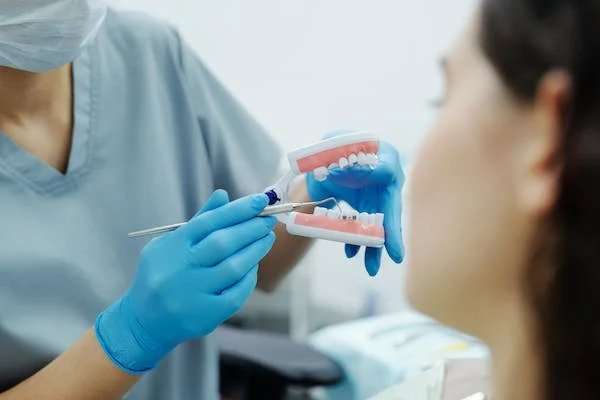Embarking on the transformative journey of orthodontic treatment as an adult is a venture that demands both courage and commitment. While braces are traditionally associated with the formative years of adolescence, a growing number of adults are choosing to pursue orthodontic interventions to enhance not only their oral health but also their overall well-being. In case you’re worrying about your braces as well, here are some of the most essential tips specifically tailored for adults navigating the unique challenges of orthodontic treatment later in life.
Understanding and Overcoming Stigma
One of the initial challenges adults face when choosing braces is overcoming the lingering stigma associated with wearing them. In contrast to adolescents who often view braces as a rite of passage, adults may harbor concerns about how this orthodontic choice will impact their personal and professional lives. It is paramount to recognize that the decision to undergo orthodontic treatment signifies a profound commitment to long-term oral health and should be embraced as a positive step toward self-improvement.
Tailoring Treatment to Unique Dental Needs
Adults pursuing orthodontic treatment frequently grapple with distinctive dental needs compared to their younger counterparts. Issues such as gum disease, worn enamel, or missing teeth may coexist with the imperative for orthodontic correction. Collaborating closely with both orthodontists and general dentists becomes imperative to address these multifaceted concerns comprehensively. A personalized treatment plan that seamlessly integrates orthodontic care with overall oral health is indispensable for achieving successful and sustainable outcomes.
The Importance of Diligent Oral Hygiene
The maintenance and care of braces represent a fundamental aspect of the orthodontic journey, demanding a meticulous approach to oral hygiene. Adults must familiarize themselves with proper practices to prevent issues such as cavities and gum disease during treatment. Regular brushing, flossing, and the use of practical dental retainers that can make your life a lot easier – these are all crucial habits that not only maintain oral health but also ensure the efficacy of orthodontic appliances throughout treatment.
Navigating Dietary Adjustments
This process is a complex journey that extends beyond the mere act of wearing orthodontic appliances. It becomes a critical facet of the lives of adults undergoing orthodontic treatment. The significance lies in the understanding that certain foods can pose challenges and potential risks to the integrity of braces. Hard and sticky foods, like popcorn or chewing gum, should be conscientiously avoided to safeguard against breakage or misalignment. Choosing softer alternatives becomes not just a matter of palate preference but a strategic move to ensure the success of orthodontic treatment. In essence, dietary adjustments become a holistic approach, contributing not only to orthodontic goals but also to overall health and well-being.
Managing Sensitivity and Discomfort
Managing sensitivity and discomfort is an integral part of the orthodontic journey, especially for adults who may encounter heightened sensitivity during the initial stages of treatment. This heightened sensitivity is a natural response as teeth and surrounding structures acclimate to the pressure exerted by braces. In this context, over-the-counter pain relievers and orthodontic wax emerge as invaluable tools in the arsenal for managing discomfort. However, the proactive use of these aids is not enough; open communication with the orthodontic team becomes paramount. This communication channel serves as a conduit for addressing any concerns promptly, ensuring a more comfortable experience throughout the treatment process. Thus, the management of sensitivity and discomfort becomes a dynamic partnership between the individual and their orthodontic care team.
Committing to Regular Follow-Up Appointments
Regular follow-up appointments transcend the routine necessity of check-ups and evolve into a pivotal component of the orthodontic journey for adults. Unlike adolescents, adults may find themselves on a more extended treatment trajectory due to the inherent complexity of pre-existing dental conditions. This extended duration necessitates patience and a steadfast commitment to the recommended treatment plan. Regular follow-up appointments serve as checkpoints in monitoring progress and making necessary adjustments. This meticulous approach becomes indispensable for achieving the desired results and maintaining optimal oral health in the long run. In essence, the commitment to follow-up appointments transforms into a cornerstone for the success of adult orthodontic treatment.
The Psychological and Emotional Dimensions
Beyond the physical aspects, the psychological and emotional dimensions of wearing braces as an adult should not be overlooked. Joining support groups or seeking guidance from peers who have undergone similar experiences can provide valuable insights and encouragement. Remembering that the investment in orthodontic treatment contributes not only to a beautiful smile but also to improved overall well-being can be a motivating factor throughout the journey.
Navigating the orthodontic odyssey as an adult demands a holistic approach encompassing physical, emotional, and practical considerations. By embracing the journey with a positive mindset, prioritizing diligent oral hygiene, and actively participating in the treatment process, adults can not only achieve a straighter smile but also foster enhanced oral health and confidence that will resonate throughout their lifetime.

As the editor of the blog, She curate insightful content that sparks curiosity and fosters learning. With a passion for storytelling and a keen eye for detail, she strive to bring diverse perspectives and engaging narratives to readers, ensuring every piece informs, inspires, and enriches.










